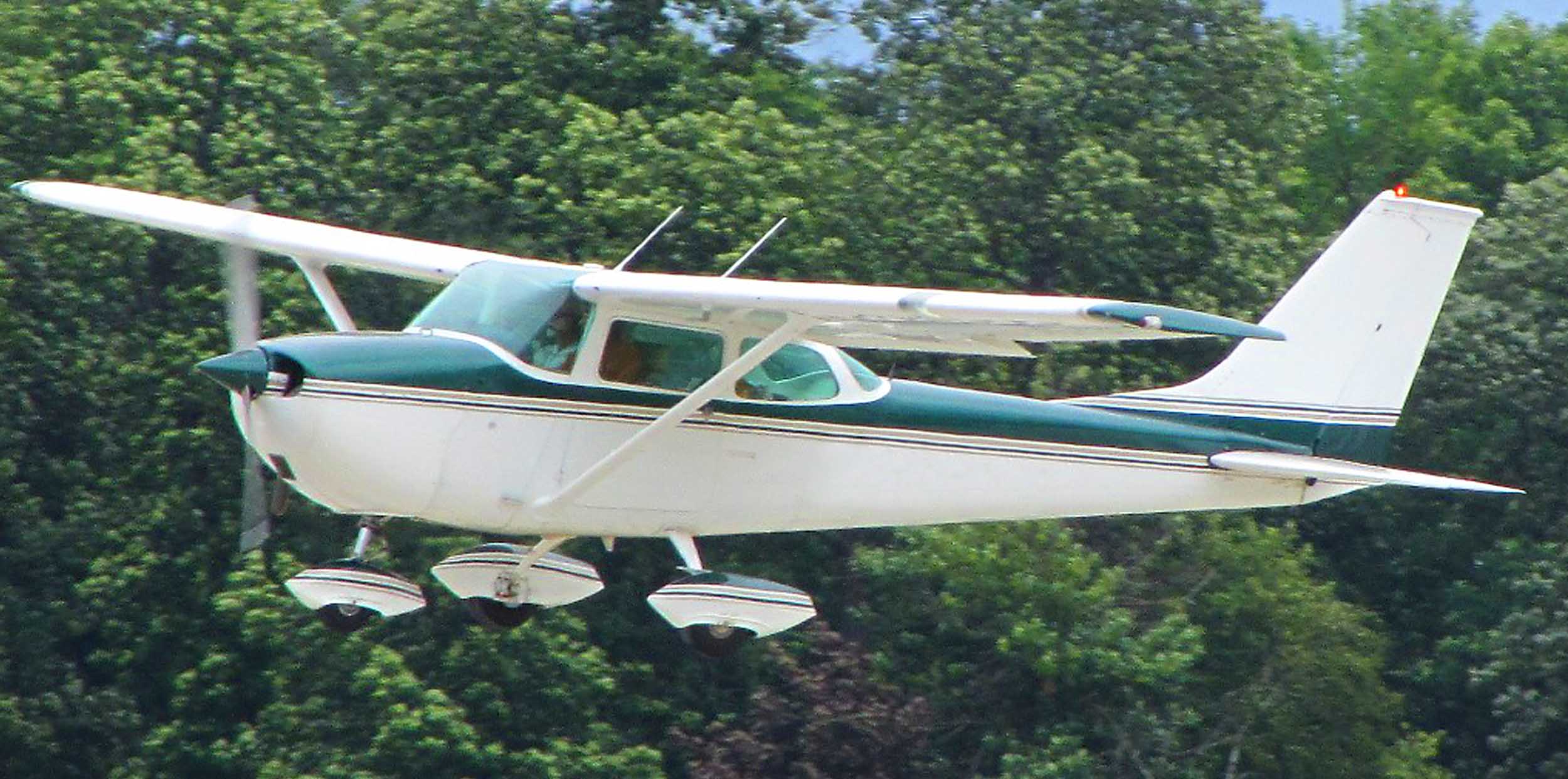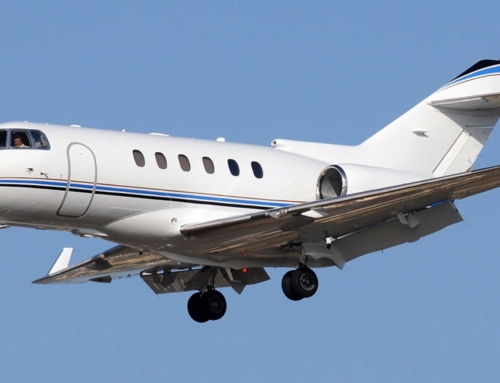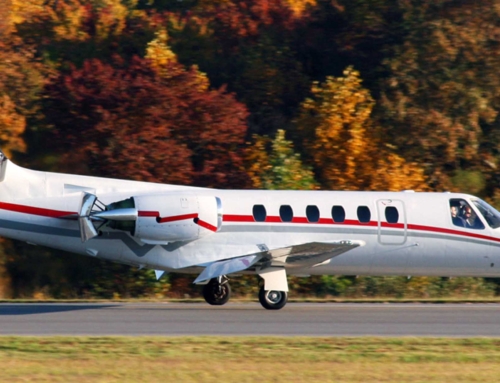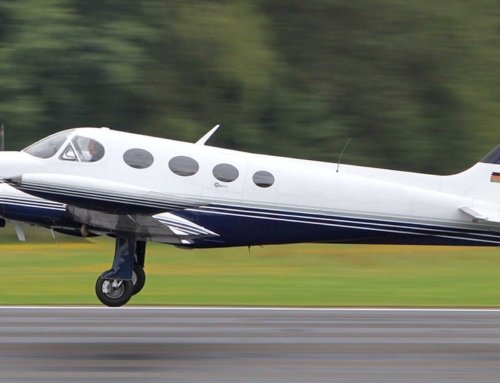Clyde Cessna founded his aircraft company in 1916 after being inspired by an Oklahoma City airshow in 1911. As a mechanic and auto salesman, he built his first aircraft from a Queens Airplane Company kit – eventually becoming a pilot. He began manufacturing planes at the Jones Motor Car factory in Wichita, Kansas.
Despite creating the Comet in 1917, World War I halted production when materials were diverted to war efforts. This turn of events forced Cessna to return to farming. In 1925, Walter Beech and Lloyd Stearman convinced him to return, forming Travel Air Manufacturing Company with Cessna as president.
Seeking more engineering involvement, Cessna established Cessna-Roos Company, though Roos quickly departed. After selling A and D series aircraft, the Great Depression collapsed private aircraft sales, shuttering operations in 1931.
Cessna’s nephew and aeronautical engineering graduate, Dwane Wallace, convinced the board to reopen the company and continue aircraft production. Cessna rejoined but retired in 1936, selling his shares to nephews Dwane and Dwight Wallace. The Wallace brothers then expanded into twin-engine aircraft and military trainers during World War II. The Cessna company later diversified into business aircraft before becoming part of Textron Aviation.
- Country of Origin: America
Cessna Hawk XP R172K Statistics
- Maximum Speed: 130 kts
- Maximum Range: 440 nm
- Maximum Occupants: 4
- Range Of Years Manufactured: 1977-1981
- Total Aircraft Build: 1,455
- Current Operational Aircraft: 706
- Useful Load: 978 lbs.
- Average Sale Value: $226,000
- Average Days On Market For Sale: Unknown
- VREF Demand Rating: Seller
Operational Resources
Operations Manual
- Hawk XP Model (1977) Pilot’s Operating Handbook
- Hawk XP Model (1980) Pilot’s Operating Handbook
- Textron Publications
Maintenance Document
Local Resources
- Textron Aviation Inc. (Domestic and International Service Centers)
- Cessna Flyer Association
Manufacturer
Insurance
- Avemco
- AOPA Insurance
- BWI Aviation Insurance
- Falcon Aviation Insurance
- Travers Aviation Insurance
- USAA Aircraft Insurance For Pilots
Cessna Hawk XP R172K Details
Interior
The Cessna Hawk XP R172K interior offers an easy-to-clean vinyl trim and deeply padded, configurable seating. This aircraft is also equipped with a practical workspace for business travelers or utility operators. Further improvements for this variant include windshield defrosters for the pilot and front passenger, enhanced airflow with additional ductwork and a larger heater valve, and a reduced side motion control column for a smoother flying experience.
Exterior
The Hawk XP R172K features a sleek exterior styling and high-wing configuration for better visibility and ground clearance. This aircraft has an airframe built to handle short-field operations with ease and is powered by a constant-speed McCauley propeller and a 195-horsepower engine.
Avionics
The following may or may not contain initial avionics for a 1980 Cessna Hawk XP R172K:
- Cessna 200A NAV-O-MATIC Single-Axis Autopilot
- Cessna 300A NAV-O-MATIC Single-Axis Autopilot with Heading Hold
- Basic Avionics Kit with Audio System & Antenna Installation
- 300 NAV/COM (RT-385A) with Electronic Frequency Displays
- 300 ADF (R-546E) with Digital Frequency Selection
- 300 Transponder (RT-359A)
- 400 Glideslope Receiver (R-443B)
- 400 Marker Beacon (R-402A) with Aural & Visual Indicators
- 400 Transponder (RT-459A)
- 400 Encoding Altimeter (EA-401A)
- DME 190 with Remote Channeling
- RNAV 511C Area Navigation System (VFR Only)
- Altitude Encoder (Blind) for Altitude Reporting
Optional Equipment
- Clock, Digital Quartz
- Carburetor Air Temperature Indicator
- Economy Mixture Indicator
- True Airspeed Indicator
- Flight Hour Recorder
- Air Conditioning, Cabin
- Battery, 24-Volt, Heavy Duty
- Beverage Cup Holders
- Control Wheel, All Purpose
- Landing & Taxi Lights
Specifications
- Configuration: Single Engine, Piston, Fixed Gear
- Max Seats: 4
- Max Take-Off Weight: 2,550 lbs.
- Cruise Speed (80%): 130 knots
- Range: 440 nm
- Takeoff Run: 800 ft.
- Takeoff Run (Over 50 ft. Obstacle): 1,360 ft.
- Landing Roll: 635 ft.
- Wingspan: 35 ft. 10 in.
- Length: 27 ft. 2 in.
- Height: 8 ft. 10 in.
Cessna Hawk XP R172K Models
172 (1956–1960)
Cessna introduced the original 172 in 1955, powered by a Continental O-300, 145-horsepower, six-cylinder, air-cooled engine. With a gross weight of 2,200 lbs and a starting price of $8,995, this model laid the groundwork for one of aviation’s most iconic aircraft. A total of 4,195 units were produced over five years.
Cessna Skyhawk 172 A-H (1956-1967)
172A (1960)
Following the initial 172, this model featured a swept-back tail fin, rudder, and optional float fittings. A total of 1,015 were built, starting at $9,450.
172B (1961)
Cessna introduced the “Skyhawk” name, though the term is now often used to describe all 172 variants. Updates include a shorter landing gear, revised engine mounts, a new cowling, and a pointed prop spinner. At the time, the deluxe Skyhawk package offered enhanced avionics and full exterior paint. Gross weight increased to 2,250 lbs.
172C (1962)
With a total of 889 units produced, the 172C’s base price increases to $9,895. This variant also introduces an optional autopilot, a key starter (replacing the pull starter), and 6-way adjustable seats. A child seat is also available, and the baggage compartment could accommodate 2 small passengers.
172D (1963)
Gross weight for this aircraft increases to 2,300 lbs. with notable updates including redesigned rudder and brake pedals, and the introduction of the GO-300E engine in the Powermatic variant. The model features Cessna’s “Omni-Vision” wraparound rear window and a one-piece windshield – though visibility improvements were marginal and drag slightly increased as well. This aircraft was later marketed as the 175 Skylark, though production ceased due to poor sales.
172E (1964)
With 1,401 units produced, this model replaced electrical fuses with circuit breakers and introduced a redesigned instrument panel.
172F (1965)
Featured electrically operated flaps and was built in France by Reims Cessna through 1971 (F172 variant). It also formed the foundation of the U.S. Air Force’s T-41A Mescalero for initial pilot training.
172G (1966)
Offered in both standard and Skyhawk versions ($12,450 and $13,300, respectively), a total of 1,597 units were built. It also includes a more pointed spinner and refined design details.
172H (1967)
The final model with the Continental O-300 engine. Updates include a shorter-stroke nose gear oleo strut, quieter cowling, and a pneumatic stall warning system. Only 839 were built.
Cessna Skyhawk 172 I-M (1968-1976)
172I (1968)
Marked the shift to Lycoming engines, with 1,206 units produced. Introduced the Lycoming O-320-E2D and a new standard T instrument layout. Cruise speed increased to 131 mph.
172K (1969–1970)
Featured a revised tailfin cap and rear windows in 1969, with conical fiberglass wingtips added in 1970. A total of 759 units were produced.
172L (1971–1972)
This 172 aircraft variant replaced the main gear with tapered steel legs for improved durability.
172M (1973–1976)
Introduced the “camber-lift” wing with a drooped leading edge for better low-speed handling. Avionics upgrades and repositioned gauges enhanced utility. By 1976, Cessna referred to all 172s as Skyhawks. 7,306 were built.
Cessna Skyhawk 172 N-P (1977-1986)
172N (1977–1980)
Powered by a Lycoming O-320-H2AD engine, the 172N was optimized for 100-octane fuel. Remained in production through 1980.
172P (1981–1982)
Cessna skipped the “O” designation to avoid confusion with the numeral zero. This model featured a Lycoming O-320-D2J engine and a gross weight of 2,400 lbs. Optional wet wings increased fuel capacity to 62 gallons.
Cessna Hawk XP R172K (1977-1981)
Cessna Hawk XP, introduced in 1976, featured a 195-hp engine and constant-speed propeller for improved climb and high-altitude performance. While it delivered a service ceiling of 17,000 feet and short-field capability ideal for remote operations, its higher fuel burn, increased weight, and limited cruise speed gains led to production ending in 1981. Just 1,450 units were built, but the Hawk XP remains a standout in the Skyhawk lineup for its boosted utility and rugged performance.
Cessna Cutlass RG 172RG (1980-1985)
First flown in 1955, the Cessna 172 Skyhawk is the most-produced aircraft in history. Developed from the Cessna 170 with tricycle landing gear, it remains in production today. Variants like the 172RG Cutlass added retractable gear and more power, reinforcing the 172’s legacy as a versatile, enduring favorite.
172 Q Cutlass (1983 & 1984)
The “Cutlass” designation linked this model to the 172RG. The 172Q was essentially a 172P equipped with a Lycoming O-360-A4N engine.
172R (1997-2012)
Marked the return of the 172 line, featuring a fuel-injected Lycoming IO-360-L2A engine. Key upgrades included:
- Multi-level cabin ventilation
- Four-point intercom
- Improved cabin insulation
- Energy-absorbing seats with reclining and vertical adjustments
172S (1998–2024)
Still in production today, the 172S features the same IO-360-L2A engine as the 172R, a Garmin G1000 avionics suite, and premium cabin options, including leather seating in later models.
Top Cessna Hawk XP R172K Questions
What Distinguishes The Hawk XP R172K From A Standard Cessna 172?
The Hawk XP features a 195-horsepower Continental IO-360-K engine and a constant-speed propeller for an improved climb performance and a higher service ceiling compared to the standard 172.
How Does The Hawk XP R172K’s Fuel Efficiency Compare To Other 172 Models?
The Hawk XP offers enhanced performance, but it also consumes more fuel at approximately 10.8 gallons per hour compared to the standard 172’s 8.4 gallons per hour.
Is The Hawk XP R172K Suitable For Short-Field Operations?
Yes, the Hawk XP’s enhanced power and performance make it well-suited for short-field operations with a takeoff distance of approximately 800 feet. Popular in remote or high-altitude areas, its performance has made it a popular choice in regions like Alaska.
How Does The Hawk XP R172K Payload Capacity Compare When Fully Fueled?
With full fuel, the Hawk XP offers a payload capacity of approximately 494 lbs., which is slightly less than the standard 172 due to its heavier engine and propeller.
Are There Any Unique Maintenance Considerations For The Hawk XP R172K?
The Hawk XP’s constant-speed propeller and more powerful engine require diligent maintenance for optimal safety and performance. Some Hawk XPs have experienced issues with the IO-360-K engine variant.
How Rare Is The Hawk XP R172K?
1,455 Hawk XP R172K units were produced between 1977 and 1981. However, only about 706 are in operation, which makes it a relatively rare variant of the Cessna 172 series.
Related VREF Resources
- Cessna Skyhawk 172N & Cessna Skyhawk 172P
- What You Should Know About Cessna’s Skyhawk 172 R-S
- Cessna Skyhawk 172 A-H The History of The Most Popular Cessna Ever!
- Everything You Wanted To Know About The Cessna Skyhawk 172 I-M
- Cessna 170 A/B
Precision-Driven Aircraft Appraisals From The Experts
Consult with our ASA Accredited Senior Appraisers for single-engine valuations.
Join VREF Online





